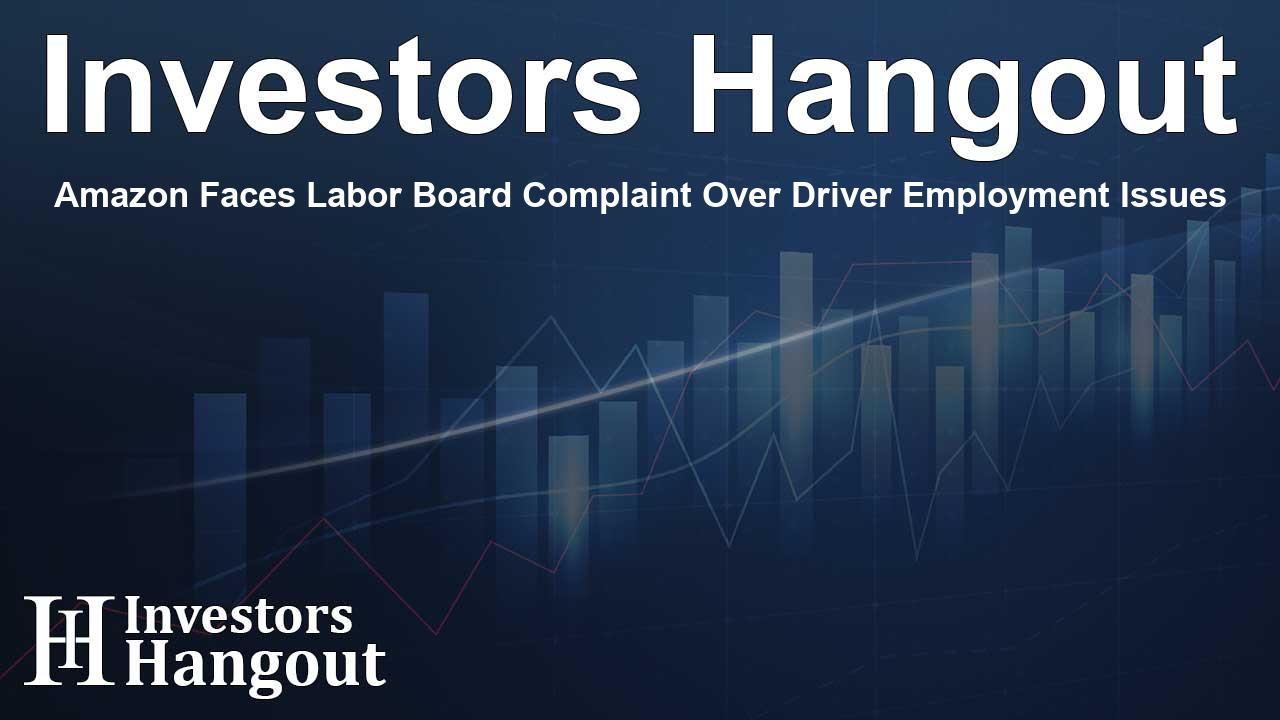Amazon Faces Labor Board Complaint Over Driver Employment Issues

Amazon's Labor Challenges: An Overview
Amazon.com (NASDAQ: AMZN) has found itself facing serious allegations from a significant U.S. labor board regarding its relationship with drivers employed by contractors. The National Labor Relations Board (NLRB) announced an official complaint claiming Amazon has illegally refused to engage in negotiations with a union that represents these drivers.
Understanding the Joint Employment Concept
The NLRB's complaint categorizes Amazon as a 'joint employer' alongside Battle Tested Strategies (BTS), the contractor employing the drivers. This determination is crucial given the implications it carries for labor rights and union activities. According to the board, Amazon has allegedly employed various tactics to dissuade the unionization efforts at one of its facilities.
Unionization Efforts by BTS Drivers
Last year marked a historic moment for drivers working with BTS, as they voted to affiliate with the International Brotherhood of Teamsters union. This event was particularly significant as it made them the first group of Amazon delivery contractors to achieve union status.
Legal Actions and Responses
Following the union’s formation, the NLRB issued a complaint stating that Amazon unlawfully terminated its contract with BTS after the drivers had unionized, doing so without prior negotiations with the Teamsters. This raises a critical question about the labor rights of those who work for Amazon's delivery network.
The Implications of NLRB's Findings
In its findings released previously, the NLRB indicated that there was merit to the union's claims that Amazon possesses a degree of control over BTS drivers, qualifying the company as an employer under federal labor laws. These assertions have resulted in heightened scrutiny of Amazon's employment practices.
The Recurring Theme of Joint Employment
The concept of joint employment has emerged as a contentious topic in U.S. labor relations over the past decade. The standards for determining joint employment have fluctuated significantly, especially since the Obama administration. Typically, business proponents advocate for a definition requiring direct control over workers, while unions argue for a broader interpretation that includes indirect control methods.
Upcoming Hearings and Potential Outcomes
An administrative judge in Los Angeles has been assigned to hear the case, with an initial hearing scheduled for next March. The implications of this ruling could extend beyond this case; if Amazon is found to be a joint employer, it may be required to bargain with contractors' drivers and potentially restructure its operational practices to accommodate union agreements.
Ongoing Legal Battles
In addition to the complaint regarding drivers, Amazon is also challenging the labor board's authority to make determinations about union negotiations involving workers in a New York City warehouse. This legal battle underscores Amazon's ongoing struggle to manage its relationships with contractors and the unions representing its workers.
As these situations evolve, the outcomes could significantly change how Amazon operates within the landscape of labor relations and contractor employment. The implications are not just about one company but could ripple across various industries that rely on similar contractor relationships.
Frequently Asked Questions
What is the main complaint against Amazon regarding its drivers?
The NLRB alleges that Amazon has illegally refused to negotiate with a union representing drivers employed by a contractor.
What does 'joint employer' mean in this context?
A 'joint employer' is defined as a company that shares control over an employee's working conditions, which affects labor rights and union activities.
What historical significance does this case hold?
This case marks the first time that Amazon delivery contractors have successfully unionized, making it a pivotal moment in labor relations within the company.
What could happen if Amazon is labeled as a joint employer?
If found to be a joint employer, Amazon may be legally required to engage in collective bargaining with the drivers' unions.
Are there other legal challenges Amazon is currently facing?
Yes, Amazon has also filed lawsuits against the NLRB regarding union negotiations for workers at other facilities, showcasing its complex legal landscape.
About Investors Hangout
Investors Hangout is a leading online stock forum for financial discussion and learning, offering a wide range of free tools and resources. It draws in traders of all levels, who exchange market knowledge, investigate trading tactics, and keep an eye on industry developments in real time. Featuring financial articles, stock message boards, quotes, charts, company profiles, and live news updates. Through cooperative learning and a wealth of informational resources, it helps users from novices creating their first portfolios to experts honing their techniques. Join Investors Hangout today: https://investorshangout.com/
Disclaimer: The content of this article is solely for general informational purposes only; it does not represent legal, financial, or investment advice. Investors Hangout does not offer financial advice; the author is not a licensed financial advisor. Consult a qualified advisor before making any financial or investment decisions based on this article. The author's interpretation of publicly available data shapes the opinions presented here; as a result, they should not be taken as advice to purchase, sell, or hold any securities mentioned or any other investments. The author does not guarantee the accuracy, completeness, or timeliness of any material, providing it "as is." Information and market conditions may change; past performance is not indicative of future outcomes. If any of the material offered here is inaccurate, please contact us for corrections.